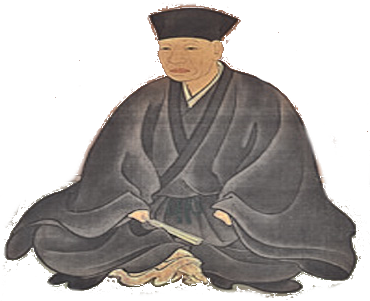 Although the first known account of a tea master of wabi-sabi is dated back to the end of the 15th century, a Zen monk by the name of Murata Jukō, but getting to grips with the art of wabi-sabi is generally attributed to the tea master Sen no Rikyū (1522-1591), under whom wabi-sabi reached its peak.
Although the first known account of a tea master of wabi-sabi is dated back to the end of the 15th century, a Zen monk by the name of Murata Jukō, but getting to grips with the art of wabi-sabi is generally attributed to the tea master Sen no Rikyū (1522-1591), under whom wabi-sabi reached its peak.
The legend of Sen no Rikyū
Frequently mentioned is the legend of Sen no Rikyū, which in its own simplicity describes the principle of wabi-sabi.
 Sen no Rikyū was a young man who wanted to learn the art of the tea ceremony. So he went to the famous tea master Takeno Jōō, who instructed him to clean up and rake up a garden full of leaves as an entrance exam. After its thorough work, Rikyū checked the flawless and perfect appearance of the garden, but before he showed it to his master, he shook a tree – probably the Japanese Red Maple tree – and several beautifully coloured leaves fell on the ground.
Sen no Rikyū was a young man who wanted to learn the art of the tea ceremony. So he went to the famous tea master Takeno Jōō, who instructed him to clean up and rake up a garden full of leaves as an entrance exam. After its thorough work, Rikyū checked the flawless and perfect appearance of the garden, but before he showed it to his master, he shook a tree – probably the Japanese Red Maple tree – and several beautifully coloured leaves fell on the ground.
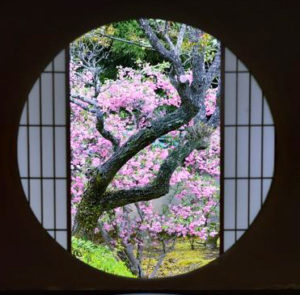 According to another variant of the story, it was a blooming Sakura and Rikyū shook a tree to drop a couple of flowers. I don’t know, but we have a Japanese cherry tree in our garden. When it blooms, it’s really beautiful, but the flowers are falling in a big way by themselves without shaking the tree. However, this story to a certain extent essentially characterizes wabi-sabi – in the beauty of imperfection, transience and incompleteness.
According to another variant of the story, it was a blooming Sakura and Rikyū shook a tree to drop a couple of flowers. I don’t know, but we have a Japanese cherry tree in our garden. When it blooms, it’s really beautiful, but the flowers are falling in a big way by themselves without shaking the tree. However, this story to a certain extent essentially characterizes wabi-sabi – in the beauty of imperfection, transience and incompleteness.
There‘s a similar story about how Rikyū many years later rebuked his son – the future student of the art of the tea ceremony – for cleaning up a garden too perfectly.
Well, it’s a legend, and it sounds slightly made up. But this was in the 16th century. A century that wasn‘t very pretty. Neither in Asia nor in Europe. It was a time of constant war and cruelty, but also a period of the flowering of arts. Even the art of Japanese tea ceremonies.
Rikyū, the greatest of the tea masters
Rikyū became a tea master and one of the greatest at that. His approach to the aesthetics of simplicity has developed new forms of Japanese architecture, garden design, fine and applied arts.
But back to reality, Japan, 16th century. Rikyū became famous and respected in his lifetime. It worried his superior and patron, Hideyoshi, so much so that he ordered the seventy-year-old tea master Rikyū to commit ritual suicide (Harakiri).
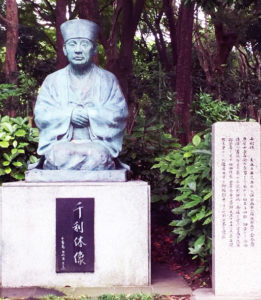 Harmony, respect, purity and tranquillity are still the bases not only of the tea ceremony. Indeed, the Rikyū himself is even in these days revered by the Japanese and considered to be the first to understand the core of the cultural and philosophical direction of wabi-sabi – the art of finding beauty in imperfection, weighing every moment in its transience, honouring the authenticity. Wabi-sabi is interpreted as “the wisdom of natural simplicity“.
Harmony, respect, purity and tranquillity are still the bases not only of the tea ceremony. Indeed, the Rikyū himself is even in these days revered by the Japanese and considered to be the first to understand the core of the cultural and philosophical direction of wabi-sabi – the art of finding beauty in imperfection, weighing every moment in its transience, honouring the authenticity. Wabi-sabi is interpreted as “the wisdom of natural simplicity“.



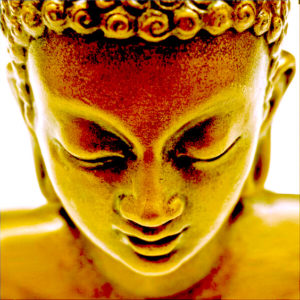
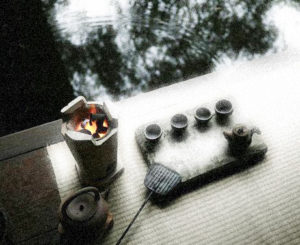 From the end of the 12th century, Zen Buddhism has begun to spread from China to Japan. At the beginning of the thirteenth century, the art of the tea ceremony also developed in Japan, mainly thanks to Buddhist priests.
From the end of the 12th century, Zen Buddhism has begun to spread from China to Japan. At the beginning of the thirteenth century, the art of the tea ceremony also developed in Japan, mainly thanks to Buddhist priests.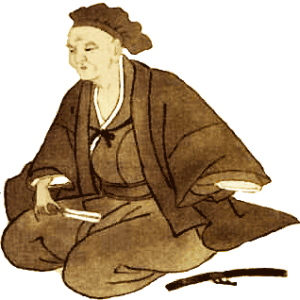 Already at the end of the 15th century, the Zen monk Murata Jukō began to rebel against the existing rules of the tea ceremony. By, for example, opening access to the tea ceremony even for ordinary people. He ended this period of tea ceremony as a certain extravagance for the chosen ones. He also began to use ordinary unruly ceramics made by local people. This is also why is Jukō mentioned as the first known tea master of wabi-sabi.
Already at the end of the 15th century, the Zen monk Murata Jukō began to rebel against the existing rules of the tea ceremony. By, for example, opening access to the tea ceremony even for ordinary people. He ended this period of tea ceremony as a certain extravagance for the chosen ones. He also began to use ordinary unruly ceramics made by local people. This is also why is Jukō mentioned as the first known tea master of wabi-sabi.